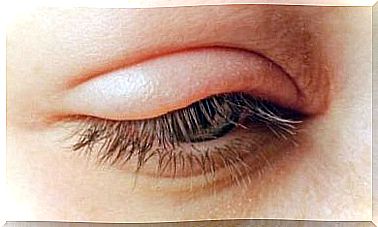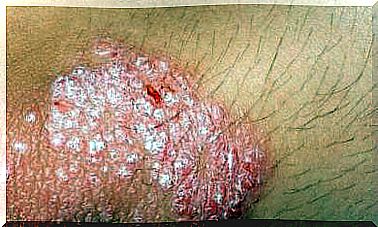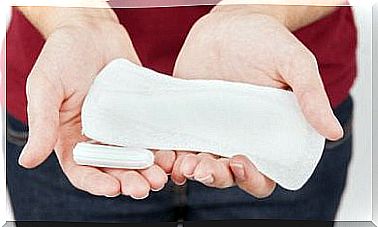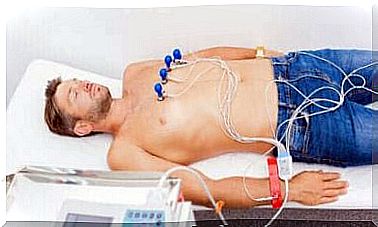Mononucleosis In Children: What You Need To Know

Mononucleosis in children under the age of 15 is quite rare, but can occur occasionally. This disease normally occurs in people between the ages of 15 and 25, although it can also affect people outside that age range.
Since it is a contagious disease, it is not easy to stop the spread of mononucleosis in children, especially when they are young. This disease can occur at the age of 6 months, although it is more serious if it is contracted by an adolescent or adult.
What is mononucleosis in children?

Mononucleosis is an infectious disease that can go unnoticed or cause strong flu-like symptoms. It is a contagious disease, almost always benign, that normally goes away on its own.
It generally affects school-age children, adolescents and young adults. Mononucleosis in preschoolers is not very common and when it does occur, it rarely produces any symptoms.
Researchers estimate that 95% of adults between the ages of 35 and 40 have been infected with this disease at some point in their lives. Some don’t even know it, because asymptomatic forms exist and go unnoticed. However, the virus remains dormant in the body.
Mononucleosis in children is more common in regions with poor sanitary conditions, which favor the spread of the infectious agent. In general , people only suffer from it once in their life. Despite this, the virus can be reactivated, especially in patients undergoing a transplant.
How do you get infected?
Mononucleosis is also known as kissing disease or mono. Although a kiss can be a form of contagion, it is not always transmitted this way. Like other viral diseases, it is spread through saliva.
This means that coughing, sneezing and generally close contact facilitate transmission. Objects containing saliva can also spread it. Children tend to share straws, water bottles and food, which is a risk factor.
Pfeiffer is caused in 90% of cases by the Epstein-Barr virus (Spanish link). The Cytomegalovirus causes 7% of infections. The origin of the remaining percentage is Toxoplasma gondii.
The Epstein-Barr virus (EBV) belongs to the same family as herpes and, as is often the case with this type of microorganism, can remain in a dormant state in the body for a long time, without causing any symptoms. However, someone who is asymptomatic can spread the disease.
Symptoms of Mononucleosis in Children
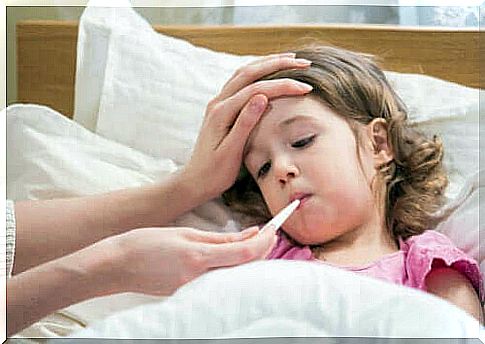
Fever and inflamed glands are hallmarks of mononucleosis in children. It is rare for a young child to show symptoms of the disease or for them to be severe. If there are, the most common ones include the following:
- Fever
- A sore throat
- White spots on the back of the pharynx
- Swollen lymph nodes in the neck, groin and armpit
- Feeling tired
In some cases, these symptoms may be accompanied by others, such as chills, headaches, swollen eyelids, inflammation of the liver and spleen. In the long run, anemia is a more symptomatic complication that can be caused by the infection.
Mononucleosis in children can lead to very serious complications, but this is rare. It can then lead to the following conditions in children:
- meningitis
- The Guillain-Barré syndrome
- heart muscle inflammation
- Thrombocytopenia
- orchid
- In very rare cases, it causes liver failure
What to do before the diagnosis?
There are no specific vaccines or drugs to treat mononucleosis. Treatment is therefore aimed at relieving the symptoms. The disease usually resolves on its own within three to four weeks. Some symptoms, such as fatigue and fever, may persist for up to a week.
The doctor will indicate which medicines the child should take. They usually use painkillers and anti-inflammatories. If complications arise, they may also prescribe corticosteroids, depending on the case.
It is best to keep your child separated from other people and make sure they drink plenty of water and rest, especially in the acute phase of the illness. They should avoid contact sports and exercise for at least three weeks.
